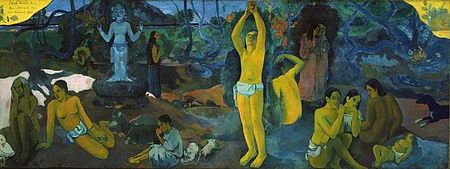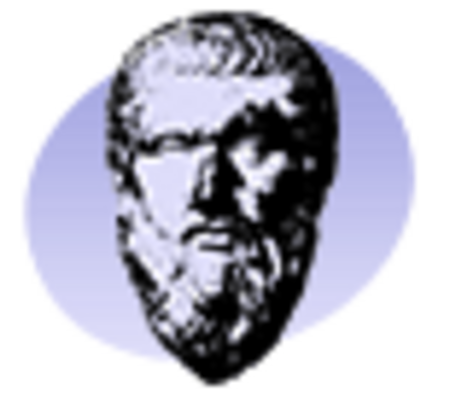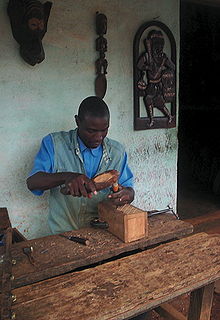Bamum people
| |||||||||||||||||||||||||
Read other articles:

pemandangan Berbera sebelah timurlaut Berbera adalah sebuah kota di daerah Saaxil, Somalia. Daerah ini kini merupakan bagian dari Somaliland. Berbera adalah sebuah pelabuhan laut, dengan pelabuhan yang terletak di bagian selatan Teluk Aden. Populasinya pada 2000 diperkirakan 200.000 jiwa. Sebelum perang saudara, Berbera merupakan tempat dari beberapa pelabuhan angkatan laut kecil yang dibangun oleh Uni Soviet, kemudian digunakan oleh Amerika Serikat. Dia kini berupa pelabuhan komersial. Semenjak…
2020年夏季奥林匹克运动会波兰代表團波兰国旗IOC編碼POLNOC波蘭奧林匹克委員會網站olimpijski.pl(英文)(波兰文)2020年夏季奥林匹克运动会(東京)2021年7月23日至8月8日(受2019冠状病毒病疫情影响推迟,但仍保留原定名称)運動員206參賽項目24个大项旗手开幕式:帕维尔·科热尼奥夫斯基(游泳)和马娅·沃什乔夫斯卡(自行车)[1]闭幕式:卡罗利娜·纳亚(皮划艇)[2…

密西西比州 哥伦布城市綽號:Possum Town哥伦布位于密西西比州的位置坐标:33°30′06″N 88°24′54″W / 33.501666666667°N 88.415°W / 33.501666666667; -88.415国家 美國州密西西比州县朗兹县始建于1821年政府 • 市长罗伯特·史密斯 (民主党)面积 • 总计22.3 平方英里(57.8 平方公里) • 陸地21.4 平方英里(55.5 平方公里) • �…

Renault 12InformasiProdusenRenaultMasa produksi1969-1980Bodi & rangkaBentuk kerangka4 pintu sedan 5 pintu station wagonKronologiPendahuluRenault 8 dan 10PenerusRenault 18 Renault 12 merupakan kendaraan sedan dan Station wagon yang diproduksi oleh perusahaan Prancis, Renault sejak tahun 1969 hingga 1980 untuk pasaran Eropa. Mobil ini dirakit di Billancourt, Prancis. Renault 12 dijual di Indonesia dalam versi 12TL Sedan, 12TL Station wagon antara tahun 1973 dan 1977. Model facelift 12TS S…

لمعانٍ أخرى، طالع محمد مصطفى (توضيح). محمد مصطفى معلومات شخصية الاسم الكامل محمد علي مصطفى الميلاد 29 أكتوبر 1989 (العمر 34 سنة)عمان، الأردن الطول 1.73 م (5 قدم 8 بوصة) مركز اللعب مدافع الجنسية الأردن معلومات النادي النادي الحالي نادي السلط الرقم 5 مسيرة الشباب سنوات…

Частина серії проФілософіяLeft to right: Plato, Kant, Nietzsche, Buddha, Confucius, AverroesПлатонКантНіцшеБуддаКонфуційАверроес Філософи Епістемологи Естетики Етики Логіки Метафізики Соціально-політичні філософи Традиції Аналітична Арістотелівська Африканська Близькосхідна іранська Буддійсь…

Тернопільський національний педагогічний університет імені Володимира ГнатюкаТНПУ|акредитація|закрито 49°32′46″ пн. ш. 25°33′55″ сх. д. / 49.54611500002777547° пн. ш. 25.56529800002777719° сх. д. / 49.54611500002777547; 25.56529800002777719Координати: 49°32′46″ пн. ш. 25°33′55″ с…

14th-century Bishop of Winchester Henry WoodlockBishop of WinchesterAppointedbetween 23 and 29 January 1305Term ended28 or 29 June 1316PredecessorJohn of PontoiseSuccessorJohn SandaleOrdersConsecration30 May 1305Personal detailsDiedeither 28 or 29 June 1316DenominationCatholic Henry Woodlock[1] was a Roman Catholic Bishop of Winchester. He is sometimes referred to as Henry de Merewell, from the place of his birth, a manor near Winchester belonging to the bishop.[2] Before his ele…

Spanish politician and labour leader Not to be confused with Pablo Iglesias Turrión, Spanish politician born in 1978. In this Spanish name, the first or paternal surname is Iglesias and the second or maternal family name is Posse. You can help expand this article with text translated from the corresponding article in Spanish. (November 2017) Click [show] for important translation instructions. View a machine-translated version of the Spanish article. Machine translation, like DeepL…

لمعانٍ أخرى، طالع كولومبوس (توضيح). كولومبوس الإحداثيات 45°38′18″N 109°15′07″W / 45.6383°N 109.252°W / 45.6383; -109.252 [1] تقسيم إداري البلد الولايات المتحدة[2] التقسيم الأعلى مقاطعة ستيلواتر عاصمة لـ مقاطعة ستيلواتر خصائص جغرافية المساحة 3…

Illuminated manuscript A squire holding the victory-bringing iron head of Alexander the Great's spear called Meufaton (Bellifortis c. 1405) A giant war carriage supposed to have been invented by Alexander the Great (Bellifortis) Warriors taking cover behind a shield (Clm 30150 manuscript) Bellifortis (lit. 'Strong in War', 'War Fortifications') is the first fully illustrated manual of military technology, written by Konrad Kyeser and dating from the start of the 15th century.[1&#…

Russian triple jumper Leonid VoloshinPersonal informationFull nameLeonid Anatolyevich VoloshinBorn30 March 1966 (1966-03-30) (age 58)Ordzhonikidze, North Ossetian ASSR, Russian SFSR, Soviet Union Leonid Anatolyevich Voloshin (Russian: Леонид Анатолъевич Волошин; born 30 March 1966 in Ordzhonikidze) is a retired triple jumper from Russia. He competed at the 1988 Summer Olympics and the 1992 Summer Olympics.[1] Career Voloshin won the European Champio…

Overview of the presence, role and impact of Hinduism in Canada Canadian HindusHindu Heritage Centre in MississaugaTotal population 828,195 (2021)[1] 2.3% of the Canadian PopulationRegions with significant populationsOntario573,700British Columbia81,320Alberta78,520Quebec47,390Manitoba18,355ReligionsHinduismMajority:VaishnavismMinority:ShaivismLanguagesOfficialCanadian English, Canadian French HomeTamil • Hindi • Punjabi • Gujarati •…

Concept in economics Keynesian cross diagram Part of a series onMacroeconomics Basic concepts Aggregate demand Aggregate supply Business cycle CAGR Deflation Demand shock Disinflation Effective demand Expectations Adaptive Rational Financial crisis Growth Inflation Demand-pull Cost-push Interest rate Investment Liquidity trap Measures of national income and output GDP GNI NNI Microfoundations Money Endogenous Money creation Demand for money Liquidity preference Money supply National accounts SNA…

Region in Asia For the village in Fars Province, see Sistan-e Olya. For the village in Gilan Province, see Sustan. For the administrative subdivision of Isfahan Province, see Sistan Rural District. Sakastan redirects here. For the province in the Sasanian Empire, see Sakastan (Sasanian province). SakastanSijistanSistanAsbad (windmills) in Sistan, Iran[1]Map of Sistan (labelled Sakastan) in c. 100 BC. Sistān (Persian: سیستان), also known as Sakastān (Persian: سَكاستان the …

تصفح بوابات فلسفة الثقافة الأعلام والتراجم الجغرافيا التاريخ الرياضيات العلوم المجتمع التقانات الفلسفة الأديان فهرس البوابات بوابات تحت عنوان الفلسفة بوابات الفلسفة الرقم البوابة 1 بوابة…

Disambiguazione – Se stai cercando altri significati, vedi 1969 (disambigua). XIX secolo · XX secolo · XXI secolo Anni 1940 · Anni 1950 · Anni 1960 · Anni 1970 · Anni 1980 1965 · 1966 · 1967 · 1968 · 1969 · 1970 · 1971 · 1972 · 1973 Il 1969 (MCMLXIX in numeri romani) è un anno del XX secolo. 1969 negli altri calendariCalendario gregoriano1969 Ab Urbe condita2722 (MMDCCXXII) Calendario armeno1417 �…

Italian architect and designer Franco Albini in 1956 Franco Albini (17 October 1905 – 1 November 1977) was an Italian Neo-Rationalist architect, designer and university instructor in design. Education and career A native of Robbiate, near Milan, Albini obtained his degree in architecture at Politecnico di Milano University in 1929 and began his professional career working for Gio Ponti. He started displaying his works at the Milan Triennale,[1] and in 1930 he opened his own practice. D…

A variety of Sonic characters gathered. Clockwise from top: Doctor Eggman, Rouge the Bat, Shadow the Hedgehog, Knuckles the Echidna, Sonic the Hedgehog, Amy Rose, Miles Tails Prower, Cream the Rabbit, Cheese the Chao (flying, center), and Blaze the Cat. Art by Yuji Uekawa. The Sonic the Hedgehog video game franchise began in 1991 with the game Sonic the Hedgehog for the Sega Genesis, which pitted a blue anthropomorphic hedgehog named Sonic against a rotund male human villain named Doctor Eggman …

State museum of Queensland Queensland Museum KurilpaQueensland Museum at South BrisbaneFormer nameQueensland MuseumEstablished20 January 1862; 162 years ago (1862-01-20)LocationSouth BrisbaneCoordinates27°28′24″S 153°01′06″E / 27.473412°S 153.018420°E / -27.473412; 153.018420Collection size1,000,000+Visitors2,000,000+[1]Websitemuseum.qld.gov.au/kurilpa The Queensland Museum Kurilpa is the state museum of Queensland, dedicated to natur…






































